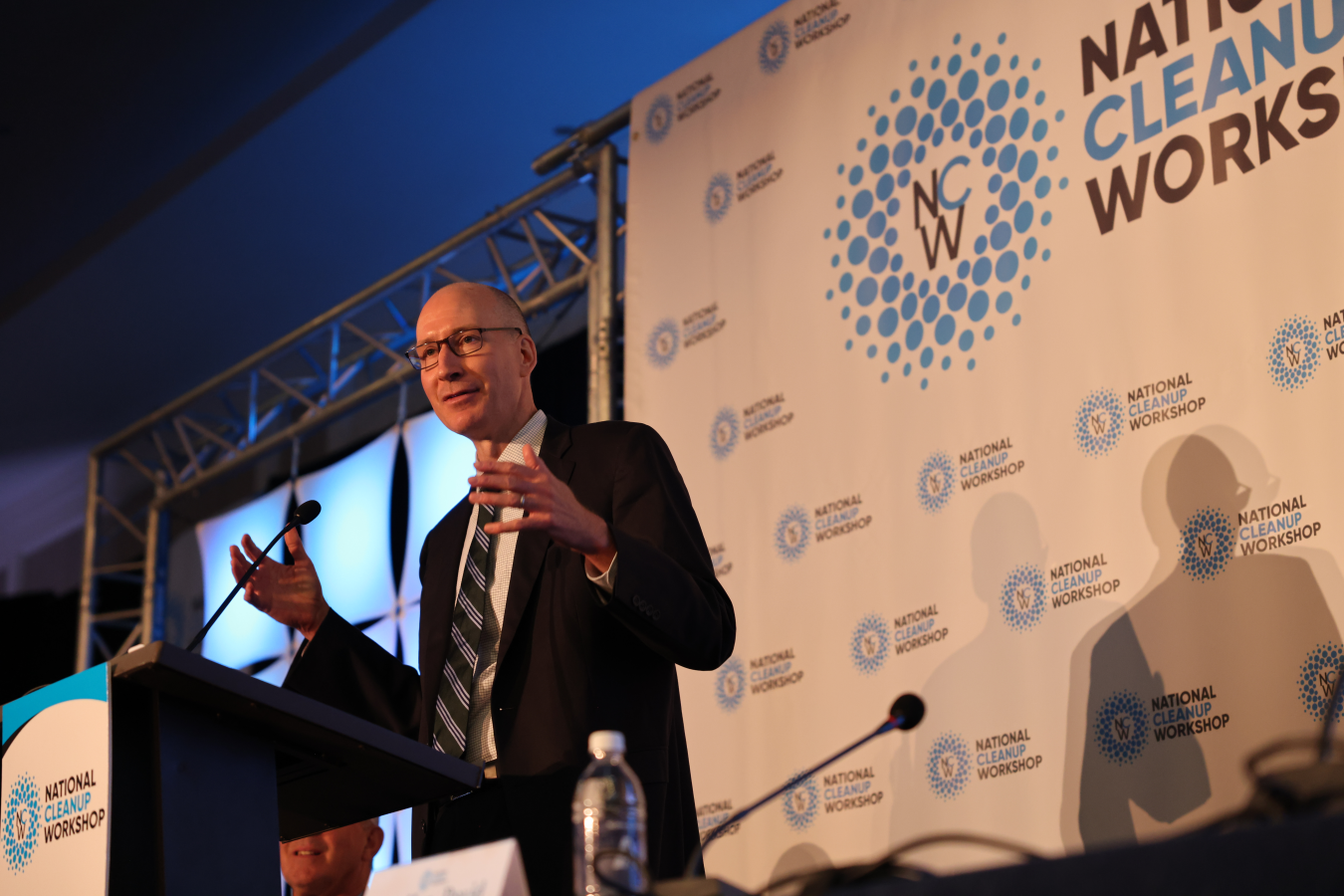Deputy Secretary Turk speaks at the 2023 National Cleanup Workshop about the Cleanup to Clean Energy initiative.
Office of Environmental Management
September 19, 2023
As parts of DOE-owned lands are prepared for clean-energy projects under a new initiative, the Department will need more experts to join its workforce to help with the transition, U.S. Deputy Energy Secretary David Turk told the audience in a keynote address at the 2023 National Cleanup Workshop.
“We got to continually do our part to make sure we’re bringing in new parts of our workforce, representative of the entire strength of our country,” Turk said. “We need a deep bench in science, technology, engineering and math.”
Unveiled by Energy Secretary Jennifer Granholm earlier this summer, the Cleanup to Clean Energy initiative will begin with five DOE sites, including the Hanford Site, Nevada National Security Sites, Idaho National Laboratory (INL), Waste Isolation Pilot Plant and Savannah River Site.
"What we're going to do with this program is take some of the lands that you've remediated that we've been working on for so many years, and for the first time ever, begin leasing them out so that developers, other partners can build some of the largest clean energy projects in the world," Turk told the audience.
Under the initiative, thousands of acres of land could be used for solar, nuclear, geothermal, clean hydrogen, net-zero microgrids, battery storage and bioenergy — projects large enough to power entire cities while also reducing carbon emissions and creating good-paying jobs, Turk said.
“That is a big deal and at its core this is a marriage of so many things we try to do at the Department of Energy in a very, very exciting kind of way,” he said.
Turk also recognized EM’s cleanup progress. Since its inception in 1989, the program has completed cleanup at 92 sites, decontaminated and demolished thousands of facilities and permanently disposed of more than 179,000 containers of waste.
“And where the cleanup efforts are ongoing, we’re engaging with the communities most affected by this legacy of our nuclear programs and paving the way for future scientific discoveries,” he said.
Turk pointed to the INL Site, where DOE and its contractors found a new way to treat radioactive waste that “had, frankly, been stumping us for years.”
He noted that accomplishment could not have been achieved without the ongoing support and partnership from the State of Idaho, local community leaders and tribal leaders.
Turk also highlighted EM’s work at Oak Ridge to extract isotopes to advance next-generation cancer treatment — enough to create a half million doses every year.
“That is real world impact, real lives being impacted for the better,” Turk said.
He also noted that EM is slated to transfer more than 375 additional acres of Oak Ridge land to the state to attract new industry and bring new jobs to the region.
“The statistics are impressive, but I think those individual stories of what we’re actually doing with real communities, in partnership with real communities, mayors across the country, is even more impressive,” Turk said.
-Contributor: David Sheeley
To receive the latest news and updates about the Office of Environmental Management, submit your e-mail address.

